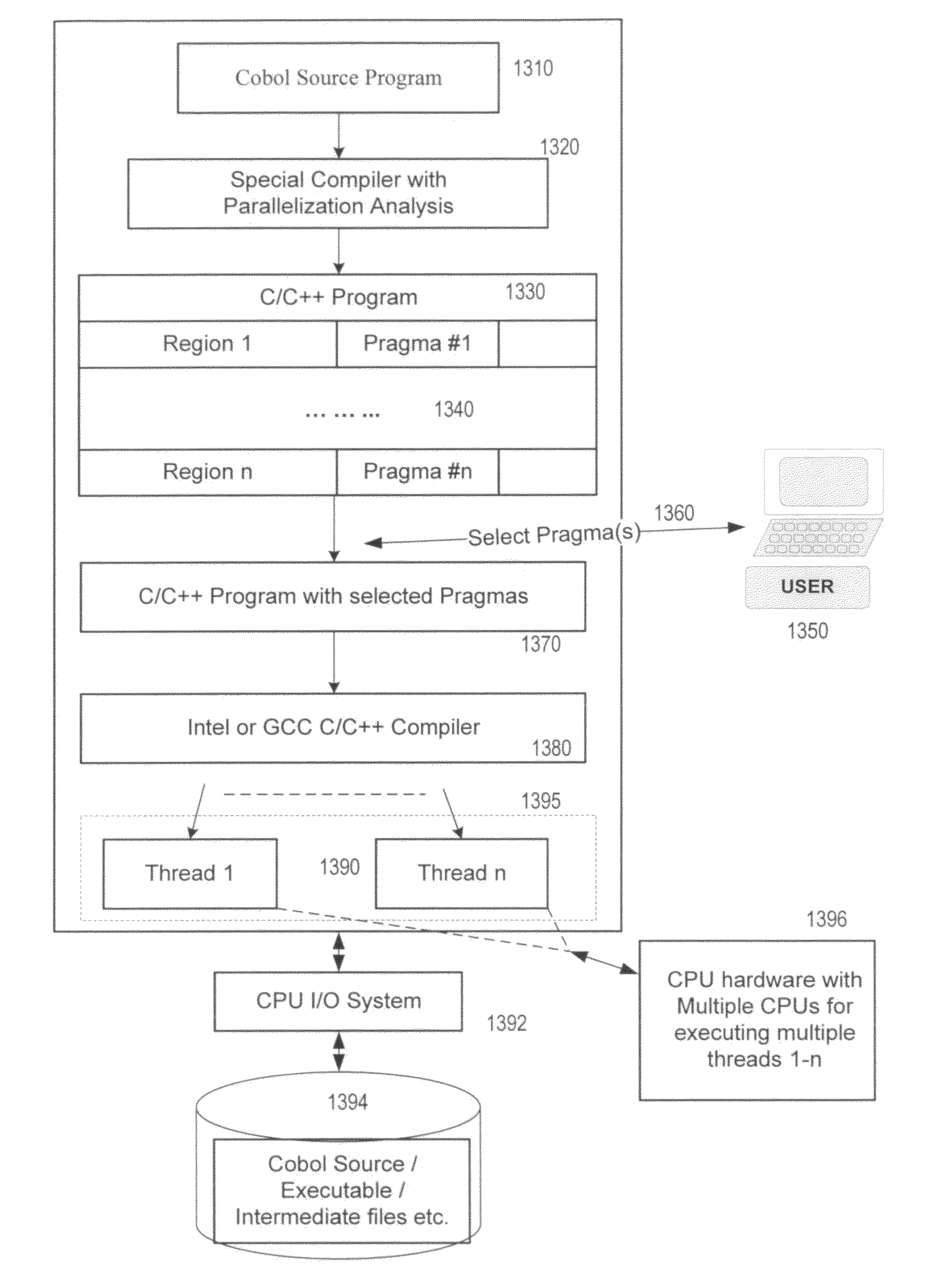Method and apparatus for enabling parallel processing during execution of a cobol source program using two-stage compilation
a source program and two-stage compilation technology, applied in the field of parallel processing, can solve the problems of limiting the speed of a single computer program, limiting the continued increase of computer hardware performance, and certain technical limitations, and achieve the effect of minimal maintenance effor
- Summary
- Abstract
- Description
- Claims
- Application Information
AI Technical Summary
Benefits of technology
Problems solved by technology
Method used
Image
Examples
Embodiment Construction
Overview
[0069]The present invention provides a method for compilation of an original Cobol program, that method providing for building an executable program with support for multiple threads of processing during execution or running of the executable program. Multiple threads of operation provide in some cases for significantly improved performance in the execution of the Cobol program in comparison to using a single thread of execution. The improvements achieved can potentially provide for a performance improvement approaching 2×, 3× or more as two, three or more threads of processing are applied, in comparison to the performance achieved by the use of a single thread.
[0070]As described herein, in an illustrated embodiment of the present invention with reference to FIGS. 14 and 15, a special purpose compiler is utilized to read an original Cobol source program from a computer file system into an addressable memory of a computer system. The variable declarations and the structure of...
PUM
 Login to View More
Login to View More Abstract
Description
Claims
Application Information
 Login to View More
Login to View More - R&D
- Intellectual Property
- Life Sciences
- Materials
- Tech Scout
- Unparalleled Data Quality
- Higher Quality Content
- 60% Fewer Hallucinations
Browse by: Latest US Patents, China's latest patents, Technical Efficacy Thesaurus, Application Domain, Technology Topic, Popular Technical Reports.
© 2025 PatSnap. All rights reserved.Legal|Privacy policy|Modern Slavery Act Transparency Statement|Sitemap|About US| Contact US: help@patsnap.com



